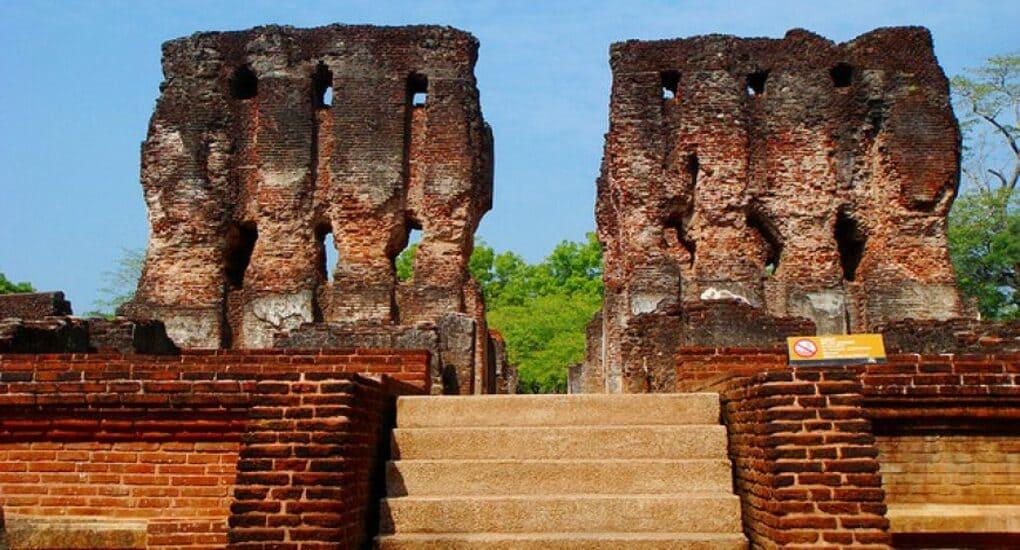Points of Interest - Polonnaruwa
Parakramabahu Palace
This seven story edifice was built in the 11th century by King Parakramabahu the great (1153-1186), it was believed to have thousand chambers, and is considered to be the Palace of King Parakramabahu. The Palace was also known as Vijayotpaya or Vijayanta Prasada, the name of the Palace of God Sakra. It was called the “Sathbumupaya”, since it consisted of seven stories.
The palace was built by King Parakramabau after the abode of Vedic god Indra (King of gods, Sakra). Adoption of the name indicates the need to secure the concept that the King and God were equal. The palace adorned with hundreds of pillars in different colors, according to the description given in the Chulawamsa.
A giant 30 feet tall, one meter thick wall, bottom half of the stair way leading to the upper floors, 55 rooms and three stories are the only ruins left of this once magnificent building. The archaeological excavations have discovered that the upper floors to this seven stories tall building was made with wood and enhanced with intricate wood carvings. The remaining colossal walls with thickness more than one meter and part of the stairs and the foundation walls give you an idea about the size of the structure.
The basic ground plan shows a similarity to that of the Vijayabahu palace in Anuradhapura in the 12th century, and the palaces of Panduwasnuwara and Yapahuwa. Parakramabahu I also built the Panduwasnuwara palace of ancient Parakramapura, when he was sub king of the southern principality. The brick walls of the palace which remains, shows the crevices and the sockets of the vertical timber columns and the beginning of the third floor suggesting the upper floors could have been made out of timber. The thickness of the walls varies from the center. Center walls being 160 meters in thickness and 9 meters in height, while the walls of the surrounding rooms are 80cm in thickness. Some parts of the palace such as the old plaster on the walls is still in good state of preservation.
The Parakramabahu Palace may have been wrecked by fire during the invasions but there are some minor ruins around it along with the main building. This site is likewise recorded as an UNESCO World Heritage Site and it is definitely worth a visit.

